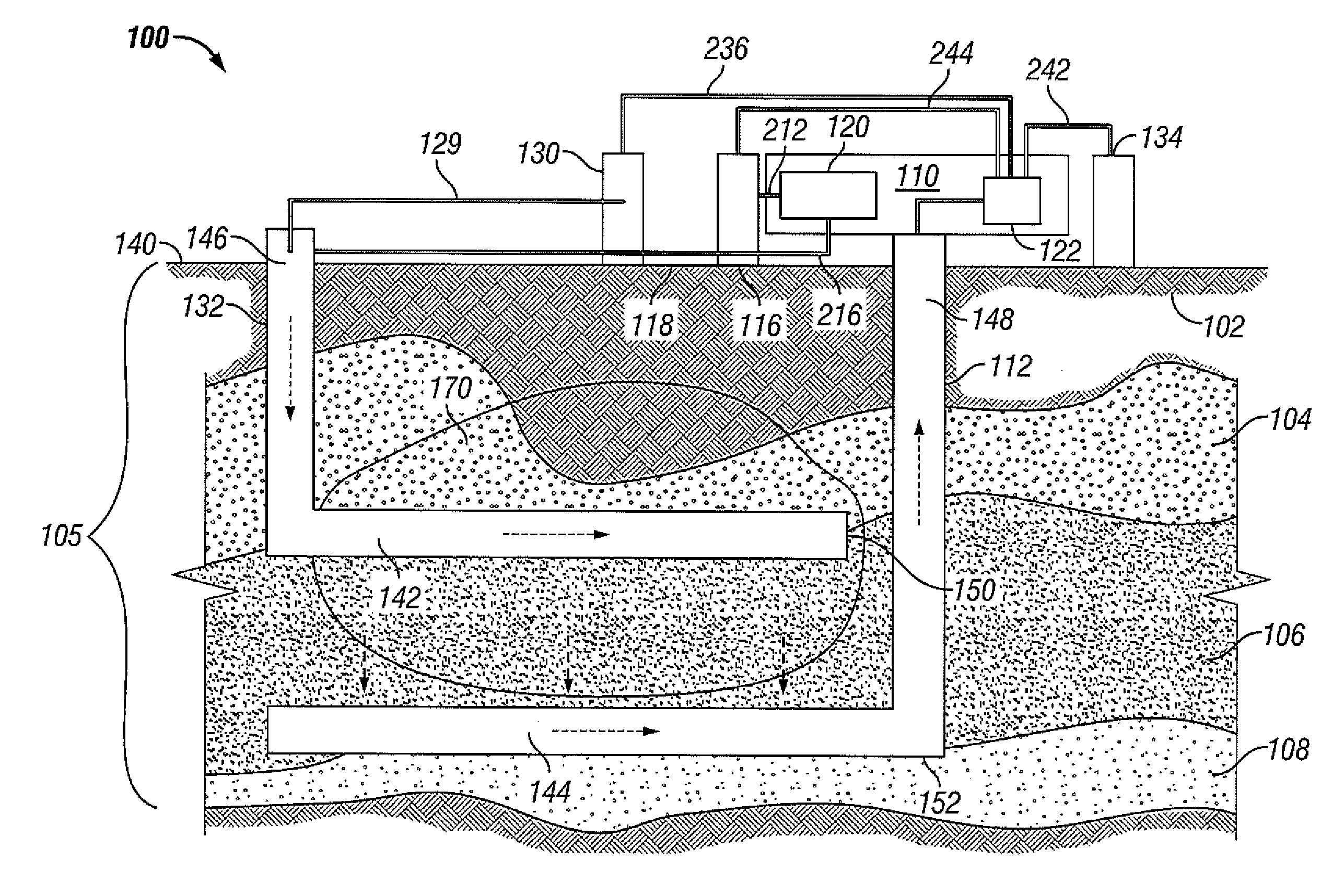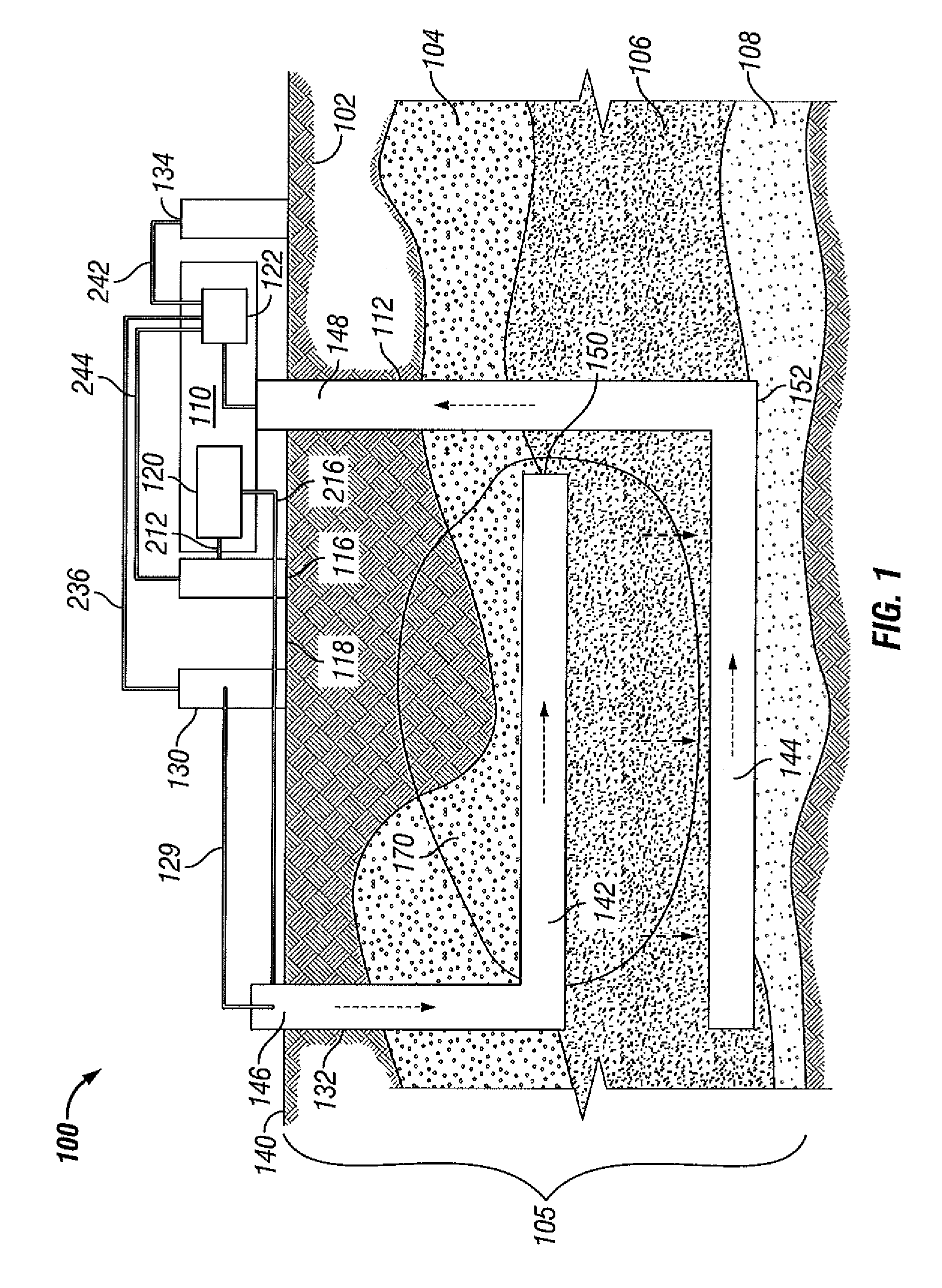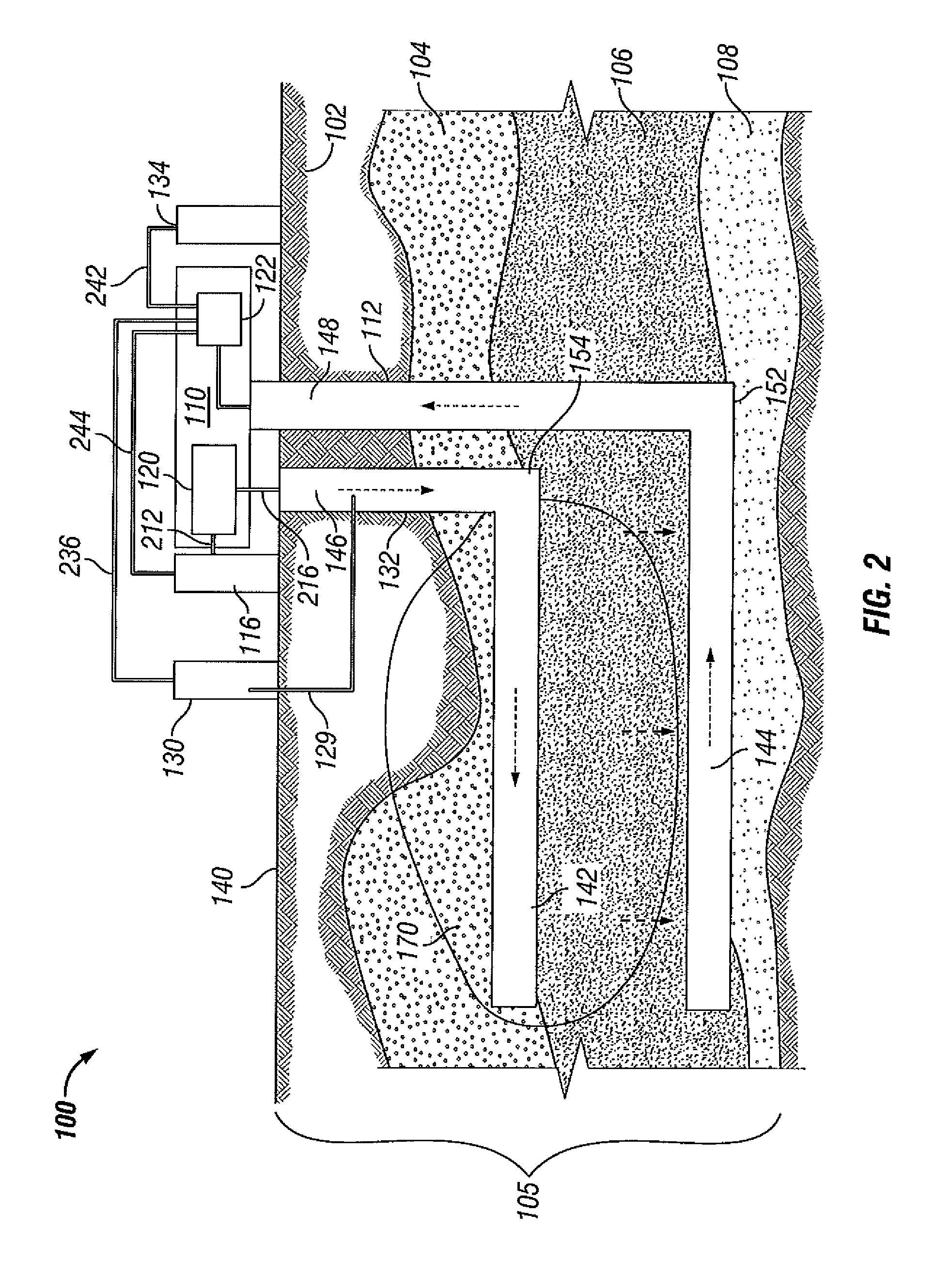Oil recovery system and method
a technology of oil recovery system and oil recovery method, which is applied in the direction of fluid removal, borehole/well accessories, insulation, etc., can solve the problems of affecting the extraction process of oil from heavy oil or bitumen containing formations, affecting the production efficiency of oil, and affecting the quality of oil
- Summary
- Abstract
- Description
- Claims
- Application Information
AI Technical Summary
Benefits of technology
Problems solved by technology
Method used
Image
Examples
example 1
[0094]The quality of dimethyl sulfide as an oil recovery agent based on the miscibility of dimethyl sulfide with a crude oil relative to other compounds was evaluated. The miscibility of dimethyl sulfide, ethyl acetate, o-xylene, carbon disulfide, chloroform, dichloromethane, tetrahydrofuran, and pentane solvents with Muskeg River mined oil sands was measured by extracting the oil sands with the solvents at 10° C. and at 30° C. to determine the fraction of hydrocarbons extracted from the oil sands by the solvents. The bitumen content of the Muskeg River mined oil sands was measured at 11 wt. % as an average of bitumen extraction yield values for solvents known to effectively extract substantially all of bitumen from oil sands—in particular chloroform, dichloromethane, o-xylene, tetrahydrofuran, and carbon disulfide. One oil sands sample per solvent per extraction temperature was prepared for extraction, where the solvents used for extraction of the oil sands samples were dimethyl su...
example 2
[0100]The quality of dimethyl sulfide as an oil recovery agent based on the crude oil viscosity lowering properties of dimethyl sulfide was evaluated. Three crude oils having widely disparate viscosity characteristics—an African Waxy crude, a Middle Eastern asphaltic crude, and a Canadian asphaltic crude—were blended with dimethyl sulfide. Some properties of the three crudes are provided in Table 3.
TABLE 3Crude Oil PropertiesMiddleAfricanEasternCanadianWaxyAsphalticAsphalticcrudecrudeCrudeHydrogen (wt. %)13.2111.6210.1Carbon (wt. %)86.4686.5582Oxygen (wt. %)nana0.62Nitrogen (wt. %)0.1660.1840.37Sulfur (wt. %)0.1241.616.69Nickel (ppm wt.)3214.270Vanadium (ppm wt.)111.2205microcarbon residue (wt. %)na8.5012.5C5 Asphaltenes (wt. %)na16.2C7 Asphaltenes (wt. %)na10.9Density (g / ml) (15.6° C.)0.880.95091.01API Gravity (15.6° C.)28.117.38.5Water (Karl Fisher Titration) (wt. %)1.65TAN-E (ASTM D664) (mg KOH / g)1.344.53.91Volatiles Removed by Topping, wt %21.600Saturates in Topped Fluid, wt. %6...
example 3
[0104]Incremental recovery of oil from a formation core using an oil recovery formulation consisting of dimethyl sulfide following oil recovery from the core by water-flooding was measured to evaluate the effectiveness of DMS as a tertiary oil recovery agent.
[0105]Two 5.02 cm long Berea sandstone cores with a core diameter of 3.78 cm and a permeability between 925 and 1325 mD were saturated with a brine having a composition as set forth in Table 7.
TABLE 7Brine CompositionChemical componentCaCl2MgCl2KClNaClNa2SO4NaHCO3Concentration0.3860.5231.47828.3110.0720.181(kppm)
[0106]After saturation of the cores with brine, the brine was displaced by a Middle Eastern Asphaltic crude oil having the characteristics as set forth above in Table 3 to saturate the cores with oil.
[0107]Oil was recovered from each oil saturated core by the addition of brine to the core under pressure and by subsequent addition of DMS to the core under pressure. Each core was treated as follows to determine the amount ...
PUM
 Login to View More
Login to View More Abstract
Description
Claims
Application Information
 Login to View More
Login to View More - R&D
- Intellectual Property
- Life Sciences
- Materials
- Tech Scout
- Unparalleled Data Quality
- Higher Quality Content
- 60% Fewer Hallucinations
Browse by: Latest US Patents, China's latest patents, Technical Efficacy Thesaurus, Application Domain, Technology Topic, Popular Technical Reports.
© 2025 PatSnap. All rights reserved.Legal|Privacy policy|Modern Slavery Act Transparency Statement|Sitemap|About US| Contact US: help@patsnap.com



